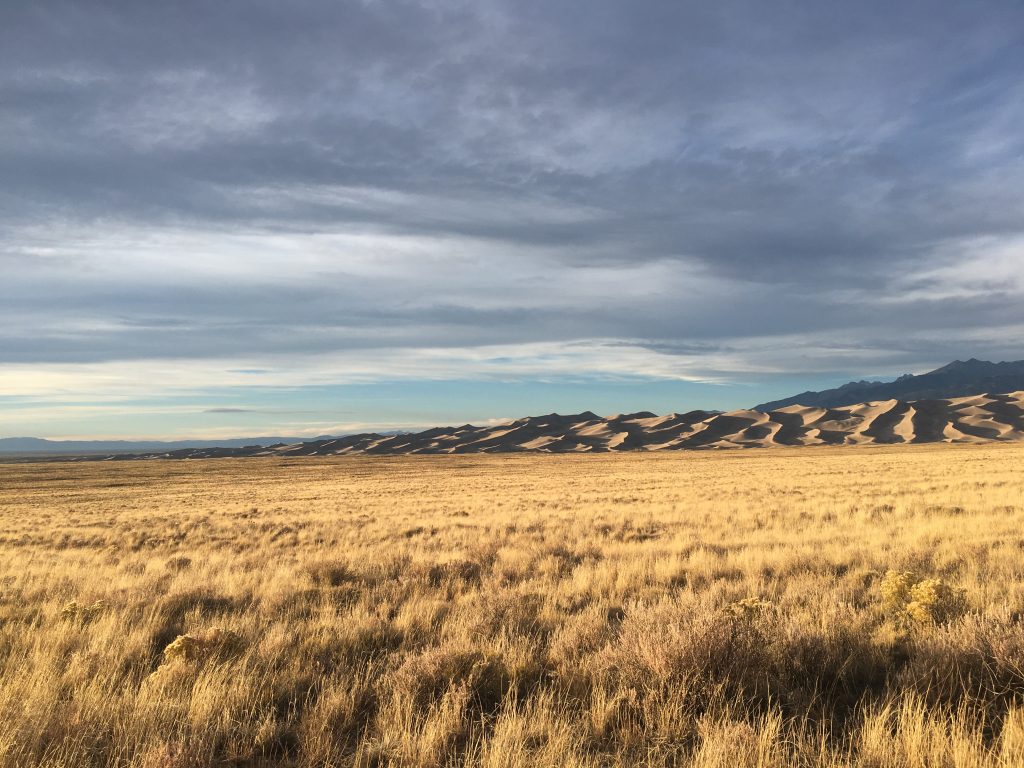
The sun sets on Great Sand Dunes National Park peak tourism season.
Photo: David Sachs
SAN LUIS VALLEY – Great Sand Dunes National Park maybe the most desolate place in Colorado, but this inhospitable landscape is may be an economic jackpot for the financially plagued San Luis Valley. As agriculture in the region faces an uncertain future, tourism is emerging as a promising new revenue source.
“It’s inspiration,” says Fred Bunch, the chief resource manager at Great Sand Dunes National Park. “It’s something greater than seeing a pile of sand.”
This pile of sand is bringing more and more people into the San Luis Valley. Each month, over 70,000 people visited the Great Sand Dunes this summer, according to the National Park Service.
“We’ve seen a 100% increase [in visitors] over the last ten years,” says Bunch. This boom in visitation followed a change in the site’s designation from a National Monument to a National Park in 2004.
“We estimate that in 2017 we had about 486,000 guests in the park,” says Bunch. “Our models suggest that spending in the community is about $29.5 million.”
As quickly as the number of park visitors has gone up, water levels in the agriculturally dependent San Luis Valley have dropped.
Cycles of drought and the over-extraction of ground water have nearly exhausted one of the valley’s two aquifers, says Andrew Valdez, a Geologist with the National Park Service. This is stifling farms and straining the already impoverished valley economy.
As tourism becomes a more viable economic engine, producers in the region are starting to shift their focus from extraction to preservation.
“I can’t overstate the value of pristine,” says Bunch. The protected land around the park, which includes two wildlife areas, may grow in the future suggests Bunch.
Data from the Rio Grande Water Conservation District shows that water restrictions have caused a number of farmers to let their fields fallow on the western side of the valley near the sand dunes. Farmers seeking another revenue source may opt to sell to the National Park Service.
Bunch and his team are planning for continued growth in the future.
“We want to make this place more of a destination in the long term’” says Bunch. In order to accommodate continued growth, the park needs to create additional parking and camp sites.
The National Park Service is also working on implementing more programs to highlight all that the dunes have to offer, including ranger led nocturnal ecology talks and a new push have the park recognized by the International Dark Night Sky Association.

